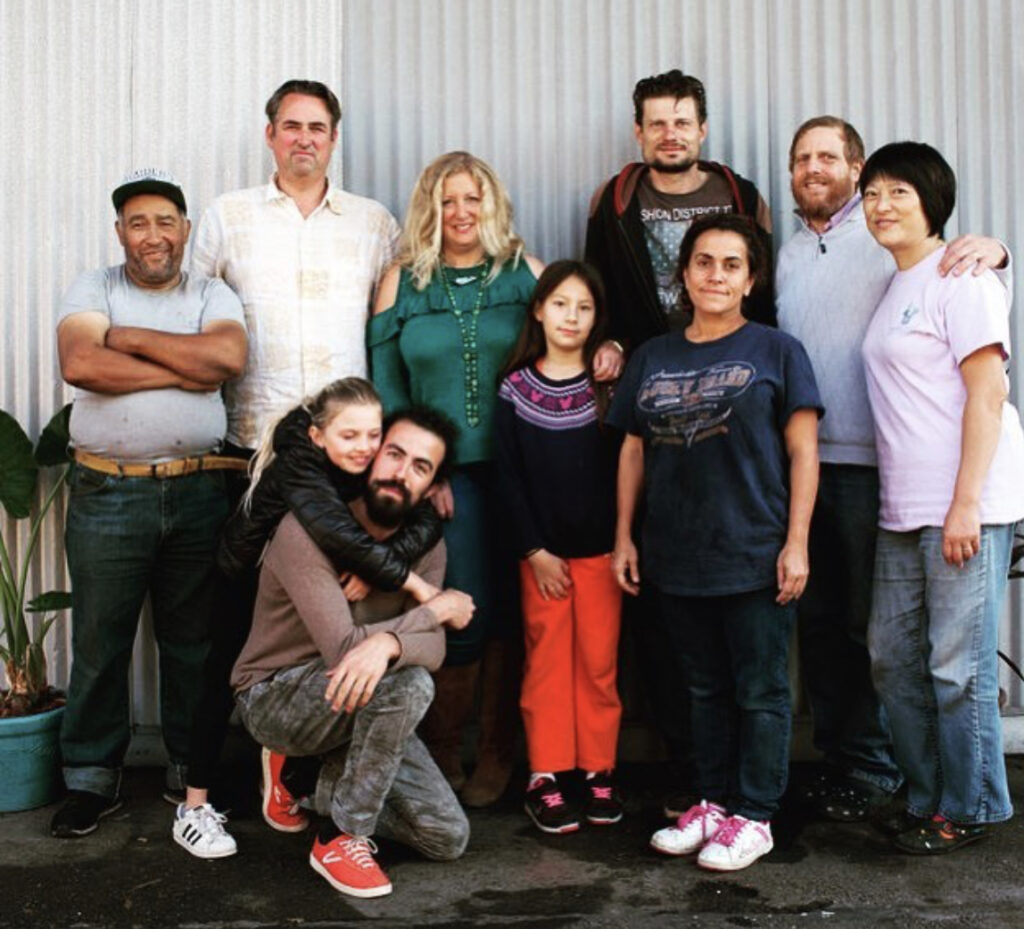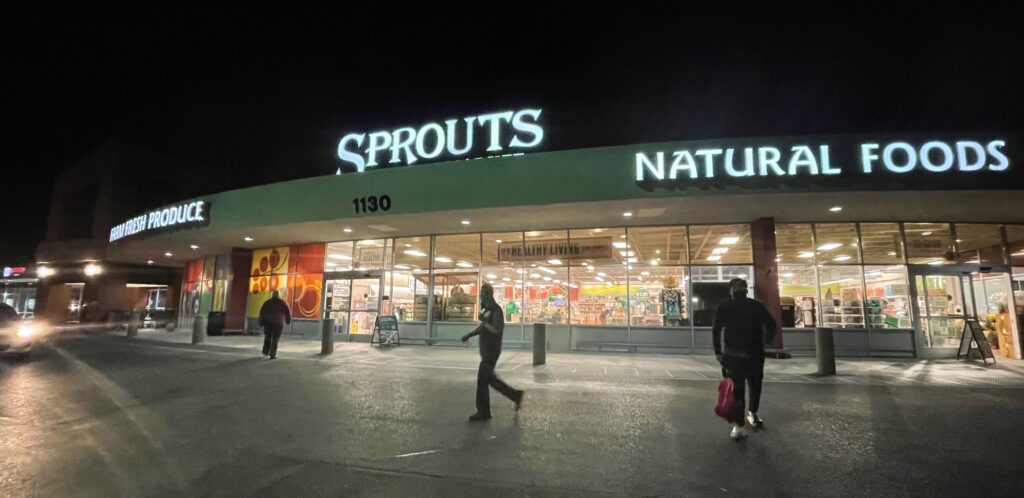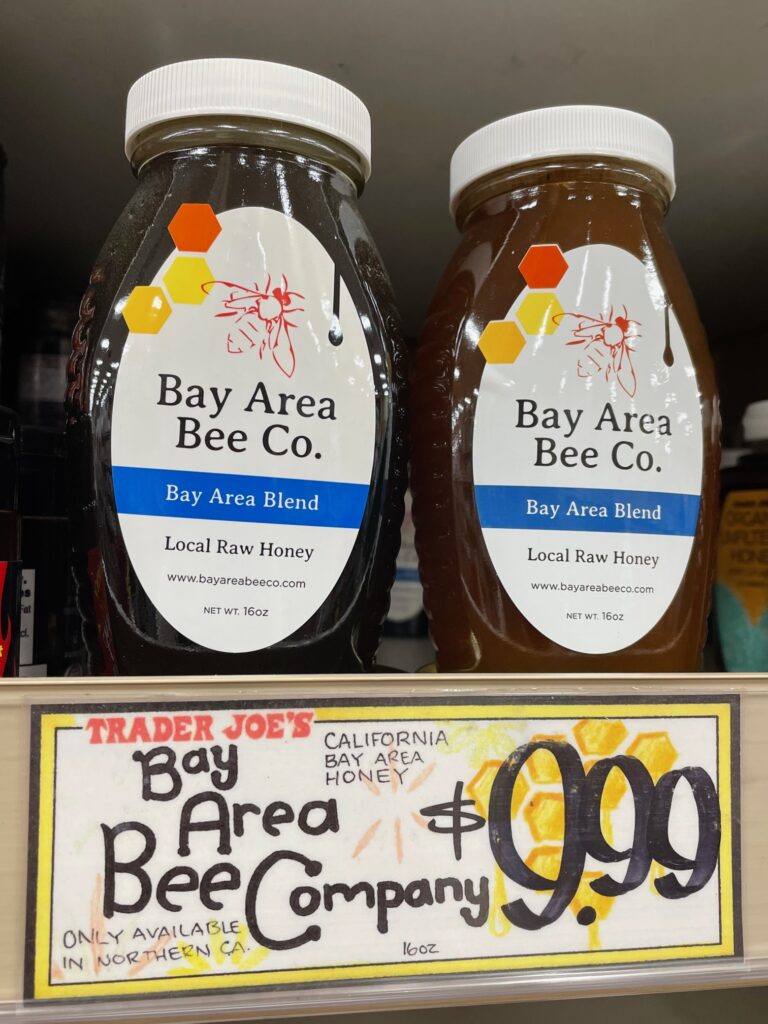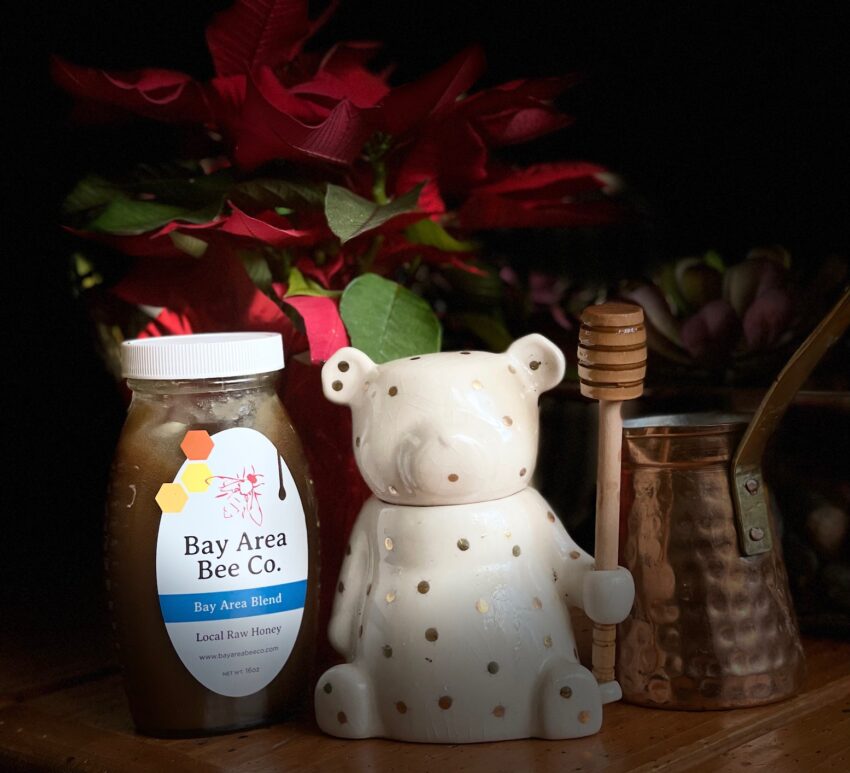Handle a book as a bee does a flower, extract its sweetness but do not damage it
John Muir
Gracious words are a honeycomb, sweet to the soul and healing to the bones
Proverbs 16:24
If you want to gather the honey, do not kick over the beehive
Abraham Lincoln
Bees are one of the most important species in the ecosystem. We must be thankful to the bees for every third bite of food we eat. They play a critical role in sustaining our food supply and the health of our planet. Honeybees pollinate 80% of our agricultural crops.
20,000 kinds of bees live on Earth in every continent except Antarctica. Humans have collected honey from bees as early as 6000 B.C. Native bees are a valuable resource in Northern California. In California alone, there are 1600 species of bees.
When some people see bees, they run. Others don’t notice them sucking the nectar from the flowers in their own backyard. Most people in the Western hemisphere have pronounced entomophobia, a fear of insects. A tiny creature buzzing seems to send normal folk into a tizzy and reach for a can of toxic bug spray.
All bees are either solitary or social. Solitary bees do not produce honey or beeswax.
A group of social bees is called a colony, which lives in an advanced insect society called a hive. They make honey, store water and care for their young in the hive. Honeybees are one kind of social bees, highly organized, hardworking, and intelligent. Only 15% of bees are social.
BEEKEEPERS
The number of beekeepers in the world in 2019 were 90.11 million, in the US, 212,000.
In 2021, number of registered beekeepers in California is 3875. There are 2 million managed bee colonies in California.
For those who keep bees, the craft is challenging and diverse enough to provide growth and enjoyment for a lifetime.
Beekeepers are not your average citizens. Their passion for the well-being of their non-human fuzzy friends sets them apart. They have an intuitive understanding of their bees, can sense their moods, and predict their behavior. The communication between a beekeeper and his/her bees is magical.
Meet Matt and Rokas of Bolinas, CA. Bolinas is a small coastal community of less than 1500 people, 13 miles Northwest of San Francisco, CA. Rokus is the head Bee Whisperer and original owner/founder of the Bay Area Bee Company. Matt is a resident of Bolinas for the past twelve years.
BEEKEEPING PARTNERS
Matt has always been interested in talking to people. Matt learns that Rokus is a local beekeeper who is struggling to keep his business and dreams about someone helping him out by investing in his company.
Thus started the partnership between the two Bay Area residents.
BAY AREA BEE COMPANY

The company has hives in the South Bay, East Bay, Marin County, San Francisco, Sonoma and Napa. On islands and rooftops, ranch, and farmlands, and even in people’s backyards.
Bay Area Bee Company, a small company with a diverse group of people from all over the world, helps the bee population of the Bay Area in Northern California.
Bay Area Bee Company honey represents the flora of each individual location.
Honey is collected in small batches from the hives. It is delicious, unblended, aromatic, flavorful and well worth the cost compared to the generic blended varieties of honey. Bay Area Bee Company’s raw honey, pollen and honeycomb can be found in Sprouts, Trader Joe’s, Rainbow grocery, Berkeley Natural. Bi-Rite, Good Earth, El Cerrito Natural and many others.
AMAZING LOCAL HONEY

There are various health benefits of consuming raw, unfiltered, unheated, unprocessed honey raised within 50-mile radius of your home:
- Local, raw honey is known to be a powerful antioxidant. It contains bee pollen and propolis, substances produced by bees that have been used medicinally since ancient times.
- Local honey = Natural anti-allergy shot.
Quercetin, a component of honey reduces inflammation and pollen allergy symptoms by stabilizing the cell membranes that release histamine which triggers allergic reactions. Raw, local honey boosts the immune system and builds immunity to allergens. - Promotes restful sleep – A spoonful of honey at bedtime regulates your blood sugar at night which results in a good night with sweet dreams.
- Restorative drink – A little honey in warm water first thing in the morning along Turmeric and Neem capsules cleanses the system. I can personally vouch for this potent energy generating combination that my entire family relies on for a great boost to the start of each day.
- Skin soother, healing salve – Honey with milk can be applied to a mild sunburn to ease the pain and prevent skin from peeling. Applied topically, honey is a natural antiseptic. Honey has wound healing components – sugar, hydrogen peroxide and propolis. Propolis kills bacteria, hydrogen peroxide disinfects. Sugar absorbs water and creates an environment where bacteria cannot survive. As honey dries, it forms a natural bandage.
- Cough suppressant Honey relieves minor coughs, colds, and sore throats.
B HIVE
All the honeybees in nature are girls. Women bees guard the entrance to the hive, care for the young and the queen, feed the larvae, remove waste, collect the honey, and clean the nest. Larvae are fed Royal Jelly the first three days. Then they are fed bee bread which is a mixture of pollen coated with honey.
The queen bee goes out of the hive once in a lifetime and mates with multiple male drones.
BUSY BEE
There is no other creature in the animal kingdom with a splendid work ethic like the bees. Every honeybee in the colony has a specific job. The female worker bees feed and groom the queen and care for the young. They build the hive and make honey. They forage for food, collect pollen and nectar, and guard the hive. Drone bees are male, and they mate with the queen bee so she can lay eggs in the cells of the hive and populate the next generation of bees. Honeybees fill the comb cells with honey, pollen and eggs.
The hair on a bee’s leg forms a basket that is used to collect pollen from the flowers. The pollen from the stamens of the flower is then carried by the bees to the hives, coated with honey and used as food(protein) for the bees.
Bees collect nectar from the flowers and make honey out of it. In addition, honeybees make royal jelly, bee pollen, beeswax, propolis and bee venom that are harvested.
HIVE FIVE SIX
- During the spring and summer, bees make honey from nectar and a little magic in their stomachs, which will feed them through fall and winter.
- Beeswax is made from honeycomb of the honeybees. It is the purest, most natural form of wax. Honeybees secrete the beeswax from the underside of their abdomens. Beeswax can be melted and used in candles, cosmetics, shoe polish, and surfboard wax.
- Bee bread is edible grade pollen coated in honey. It is high in protein and known to strengthen the immune system.
- Royal Jelly, rich in proteins and fatty acids, is produced by the mouth glands of young nurse bees and is food fed to queen bee larvae.
- Propolis or tree resin is used as a bee glue to reinforce the hives. Propolis is known to fight bacteria, viruses, and fungi.
- Bee venom is used to treat nerve pain and multiple sclerosis.
A BEE, C, DANCE
Honeybees communicate through dances called “waggle” and by producing a chemical called pheromone. Scientists think it’s a way of communicating to the other bees where the best nectar is.
GIFTED AND TALENTED
Honeybees can recognize human faces.
They have 170 odor receptors in the pits of their antennae.
The queen bee has control over laying male or female eggs.
They can calculate the shortest route between nectar sources.
BEES NEED:
I WATER
II CARBOHYDRATES
III PROTEIN
I WATER
All of us should reflect on the everyday cleaning products we use that touch water.
When you wash something and throw the soapy water out, and the bees drink that water, they should not die. If we start thinking about, “Would I want to drink this product that I am using?”, we will pick gentler, environmentally safe alternatives like Simple Green Cleaner, Bronners soap, and Healthy Home and Planet Cleaning Products by Grove Collaborative, rather than chemicals that pollute and kill the flora and fauna of our sacred planet.
II CARBOHYDRATES
Bees get their carbohydrates from the honey they make.
There are simple (bad) carbs and complex (good) carbs. Honey is a good, clean carb.
A piece of a chocolate cake consumed at night will initially spike the blood sugar and then crash at 3 am. When sugar levels tank, sleep is disturbed. Honey (good carb) regulates the blood sugar level. 1 tsp of honey at bedtime, will keep sugar level consistent all night.
A bite of honey v/s a bite of chocolate cake, both carbs, behave dramatically different inside the human body in terms of health benefits and potential problems respectively.
III PROTEIN
Bees are vegetarian. Their protein comes totally from pollen. Pollen is a superfood. You could eat only pollen, a little honey and drink water for a year and survive. You could have a shot of pollen every morning instead of breakfast.
Pollen gets stuck to the legs of the honeybees by accident. The bees fly from one tree/bush/flower to another, and they pollinate. The fruit trees need to be pollinated. They cannot do it themselves.
In general, pollen is very healthy except when we spray it with fertilizer. Since it gets stuck to the legs of the bees, it finds its way back to the hive. Then, they take a little bit of honey and wrap the pollen with it. This is called pollen bread. Pollen by itself spoils. Since honey never does, the pollen is preserved.
WHAT IS HONEY, HONEY?

Honey is the nectar of all trees and flowers around us. Nectar that is found in the wild will go bad over time if not refrigerated. Bees have a little magic in their honey stomachs that preserve the honey and make it antibacterial and antifungal. That’s why honey never rots, only darkens with age.
- Honeybees collect nectar from flowers with their tongues and store it in their honey stomachs.
- Honeybees fly back to the hive and transfer the honey to another honeybee using their mouths.
- Honeybees make spit bubbles with the nectar until it turns into honey, stored in the wax, honeycomb, hexagonal cells, and sealed with a wax lid to keep it fresh.
The amount of bee labor and flight time that goes into making a 16 oz jar is staggering. Tens of thousands of bees, flying 11,200 miles, foraging nectar from 4.5 million flowers.
A third of all food production requires bees to pollinate. There would be no oranges, almonds, strawberries, blueberries, avocados, tomatoes, coffee, and chocolate without bees. Unless the groves are organic, they all use pesticides that are deadly to the bees. Bees are unknowingly pulling nectar out of flowers sprayed with Roundup or other harsh chemicals. They cannot decipher that the flowers have been sprayed with pesticides. They bring it back home and pollute the hive. I wonder if they are getting enough water to dilute the pesticides they picked up.
In Bolinas, all the nectar in the wildflowers, bushes and trees growing wild in Bolinas yields healthy, clean honey.
POLLINATION
Honeybees pollinate, making food grow by accident for us, as they go about collecting their own food to bring back home. They are more efficient and successful at pollination than other pollination sources like insects, birds, and wind.
Bees pollinate and help plants make seeds.
- Honeybees can see colors and are most likely to land on purple, blue or yellow flowers. Pollen from the stamens (male part) of a flower stick to their bodies.
- Honeybees suck the nectar from the flower and store it in their honey stomachs.
- Honeybees visit another flower to collect more nectar and pollen. Pollen falls off the honeybee’s body and gets stuck and enters the sticky part of the plant, stigma (female part).
- The stuck pollen then grows a tube to the ovary of the flower where it combines with the egg and starts to become a seed.
- The seed then grows into a new plant.
VARIETIES OF HONEY
There are many varieties of honey with its own color, aroma, and flavor. The color of honey ranges from water white to dark amber. The scent of honey comes from the flowers the bees visit. Light amber honeys have a mild flavor. Darker the honey, the more intense the flavor.
USES OF HONEY
- Remedy for sore throats.
- Useful in healing severe burns when applied to bandages that cover the wound.
- Manuka honey dressings is used to treat surgical wounds, resolve persistent infections, clean, deodorize wounds, and reduce pain and inflammation.
- Calming potion for gastric upsets, cough medicine and as a restorative drink.
- Effective antibiotic, disinfectant, and eye salve.
- Anti-allergy.
- Anti-scarring.
- In Chinese medicine, used to treat blood disorders.
- Romans believed honey cured pneumonia and maladies of the throat and mouth.
- Relieves edema.
- Sweetener.
- Powerful source of energy.
- Regulates blood sugar.
- Soothing moisturizer in beauty products.
BEE TRIVIA
- Bees are closely related to wasps and ants.
- Bees have five eyes, three simple eyes and two large compound eyes made up of thousands of eye cells, used for detecting movement and patterns.
- Honeybees have long tongues that they use as a straw to suck up the nectar.
- Predators of bees include birds, dragonflies, honey badgers, skunks, bears, opossums, skunks, racoons, and foxes.
- Queen bee can lay up to a million during her lifetime
- Honeybees can’t fly in the cold. In Winter, they keep warm by huddling into a tight ball with the queen at the center.
- Only the female honeybees have a jagged stinger. When they sting a mammal, the stinger pieces their abdomen, and they die. Except the queen whose stinger has a smooth surface who can repeatedly sting without causing herself any harm.
- A honeybee’s internal clock tells it how far they have flown and how far the Sun has moved during its journey, so it can always fine its way back home to the hive.
- One teaspoon of honey is equivalent to the lifetime work of twelve honeybees.
- Honeybees flap their wings in the hive to keep air flowing through the hive, keeping the colony dry.
- Queen honeybees live 1 – 2 years; worker honeybees live 15 – 38 days in summer and 150 – 200 days in winter
WORLD WITHOUT BEES
Pesticides, pollution, parasites, climate change and loss of habitat contribute to the disturbing trend that threatens our vulnerable honeybees.
Annual honeybee colony loss has averaged 40% for over a decade.
Without bees, half the fruits and vegetables in our supermarkets would disappear. We would also lose the animals that eat these plants, and the animals that eat those animals. Bees remind us of the fragility of humanity’s relationship with nature. If bees disappeared, man would have four years more to follow suit.
HOW WE CAN HELP (BEE CONSIDERATE)
- Avoid using herbicides, fungicides and insecticides on your lawn and garden.
If you choose to use Pesticide, please review this very helpful resource by Pesticide Task Force of North American Pollinator Protection Campaign (NAPPC): https://www.pollinator.org/.org/assets/generalFiles/NAPPC.pesticide.broch.Consumer-FINAL-05-27-10.pdf - Consider supporting local beekeepers. Buy their honey. Pay them the premium price the quality of the product demands.
Consider locally owned, organic, responsible, and sustainable Bay Area Bee Company honey locally available at Trader Joe’s, Sprouts, Bi Rite, and many others. They would make wonderful Christmas gifts this holiday season for neighbors and friends in your community. - Consider being mindful of all the ways in which you use water and switch to gentler, nontoxic, effective, sustainable, and cruelty-free natural soaps and cleaners like Bronners, Simple Green and Healthy Home and Planet Cleaning Products by Grove Collaborative.
- Consider living more gently on Mother Earth. By being conscious of the products we choose, and the social and environmental impact of the companies that make them. Certified B corporations are companies that are part of a global movement to use business as a force for good.
- Consider switching to compost as a safe alternative for your lawn and garden instead of chemical fertilizers that cause harm.
- Reduce, Recycle and Reuse.
- Consider being vocal with your local lawmakers about how bees need our help.
- Consider planting native, bee-friendly flowers with long flowering seasons. In Fall, plant sunflower, sedum; in summer plant lavender, mint, and cornflower and in spring, plant crocus, snowdrop, and Iris. Some flowers that have a lot of nectar are bluebell, hollyhock, clover, and daisy attract honeybees.
- Plant native flowering trees and shrubs.
- Consider using natural garden products without harsh chemicals that kill bees. Like diluted Neem Oil in water.
- Consider having a honey tasting party. Let everyone taste 5 – 10 different honeys, then see if they can identify the floral source.
- Consider using less plastic, electricity, water, chemicals, and eat more local foods.
Like honey and pollen from your locally owned and operated, Bay Area Bee Company.
If you have allergies, they will disappear. Like Matt’s did.
The protection of the bee species is essential to the health of the world. I ‘beelieve’ that we can achieve any goal if we collectively help each other make lifestyle changes that nurture these amazing creatures.
Let’s do all we can to protect our precious bees, people, and planet and truly bring joy to the world this Christmas 2021, by being considerate to other beings, and living a life that would make Jesus and Mary smile down on humanity.
REFERENCES
Websites:
- https://www.farmersalmanac.com/local-raw-honey-22439
- https://www.pollinator.org
- https://calag.ucanr.edu/Archive/?article=ca.v063n03p113
- https://www.californiastatebeekeepers.com
- https://www.webmd.com/vitamins/ai/ingredientmono-503/royal-jelly
- https://www.ncbi.nlm.nih.gov/pmc/articles/PMC2527632/
Books Consulted that contributed to this blog:
- Laura Marsh, Bees, National Geographic Kids, 2016
- Charlotte Milner, The Bee Book, DK Publishing, 2018
- Alex Woolf, Scholastic, You wouldn’t want to live without Bees, Franklin Watts, 2017
- Stephen Buchmann, Honey Bees, Letters from the Hive, Franklin Watts, 2017
- Lily Williams, If Bees disappeared, Roaring Brook Press, 2021
Playlist while compiling this Blog:
- Honey, honey – Abba
- You can do magic – America
- Canaanland – Milk and Honey
- Fields of Gold – Sting
- A Simple Man – Lobo
- Forest Hymn – Deep Forest
- Fireflies – Owl City
- Boyce: 8 Symphonies: Academy of St Martin in the Fields
- Higher Ground – Steven Halpern
- Christmas – Mannheim Steamroller

Great blog!
Eat more Honey! Honey is an amazing food. We must all do out part to support bees for the sake of the planet.
I always appreciate reading footprints blogs…This one was so informative and inspiring, with helpful reminders of the importance of making sure that bees around the world are protected. I will be especially grateful the next time I enjoy some local honey!
Nice blog. I love it